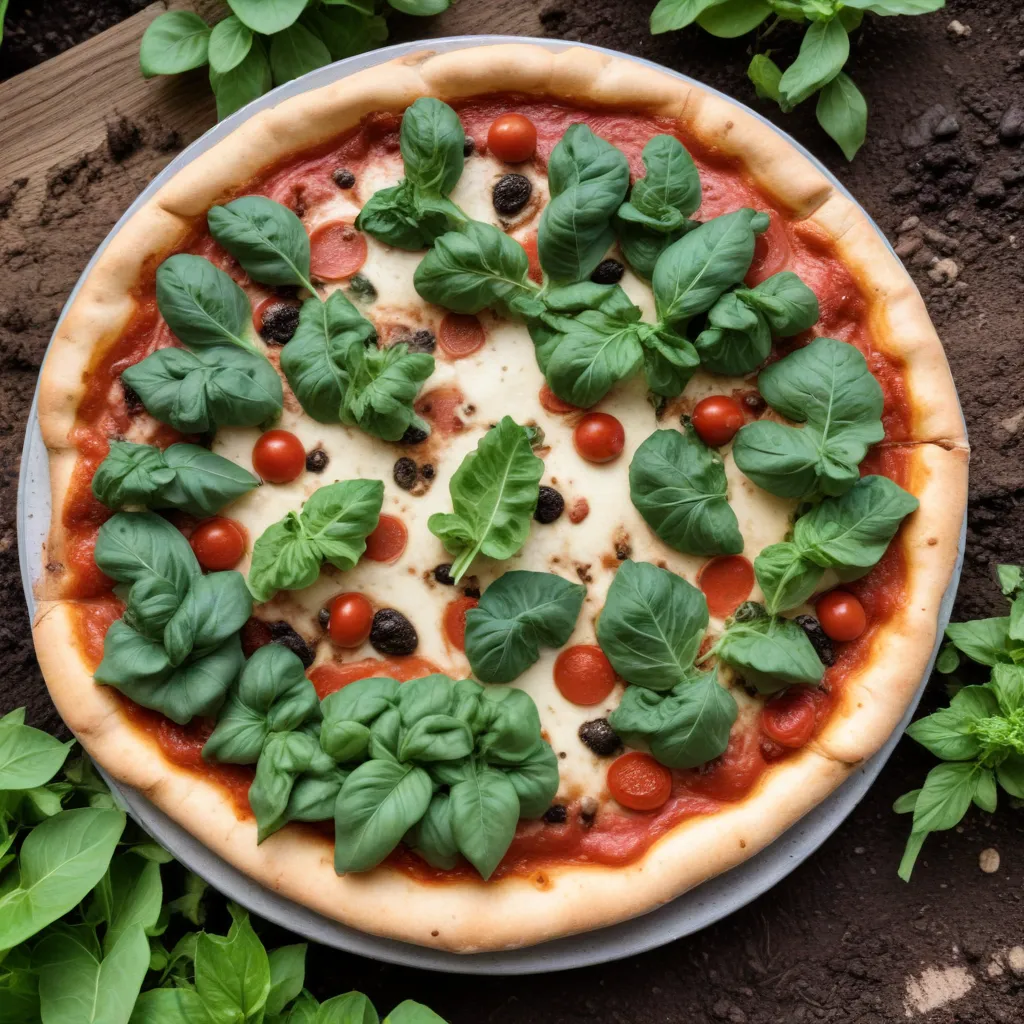
Planting a Pizza Garden: Homegrown Ingredients for Homemade Pies
Imagine the delight of biting into a homemade pizza topped with juicy tomatoes, fragrant basil, and savory peppers – all grown right in your own backyard! At Crooked Pines Farm, we believe that the best pies start with the freshest, most flavorful ingredients. That’s why we’re excited to share our guide to creating a thriving “pizza garden” – a dedicated growing space for the key components of the perfect homemade pie.
Garden Planning
The first step in cultivating your pizza garden is selecting the ideal site. Choose a location that receives at least six hours of direct sunlight per day – this is crucial for the healthy development of tomatoes, basil, and peppers. Ensure the soil is well-draining and nutrient-rich by incorporating compost or aged manure before planting. Practicing crop rotation will also help maintain soil fertility and discourage the buildup of pests or diseases.
Vegetable Varieties
When it comes to the star players of your pizza garden, the options are plentiful. For tomatoes, consider classic slicing varieties like ‘Beefsteak’ or ‘Big Boy,’ as well as smaller, more compact types like ‘Cherry’ or ‘Grape’ for easy snacking. Basil is an essential herb, with sweet, Genovese-style basil being a popular choice. Don’t forget to include a few pepper plants, such as bell peppers in various colors or spicy Italian varieties like ‘Calabrese’ or ‘Serrano.’
Herb Essentials
No pizza is complete without a blend of aromatic herbs. In addition to basil, be sure to incorporate oregano, rosemary, and thyme into your pizza garden. These herbs not only add incredible flavor to your homemade pies but also thrive in the same sunny, well-draining conditions as your other pizza garden crops.
Planting and Cultivation
Sowing Seeds
Timing is crucial when it comes to planting your pizza garden. Start your tomato, pepper, and herb seeds indoors 6-8 weeks before your last expected frost date. This will give the plants a head start and ensure they’re ready for transplanting once temperatures warm up. When sowing, follow the seed packet instructions for proper spacing and depth. Don’t forget to mulch around the plants to retain moisture and suppress weeds.
Ongoing Care
Consistent watering is key to keeping your pizza garden thriving. Aim to provide about an inch of water per week, either through rainfall or supplemental irrigation. Stay on top of weeding to prevent unwanted competition for nutrients and water. Regularly monitor for common pests or diseases, and address any issues promptly using organic pest management techniques.
Harvesting
Keep a close eye on your plants as they begin to ripen. For tomatoes, look for a deep, even color and a slight softening of the skin. Basil leaves are best harvested before the plant flowers, while peppers can be picked at any stage of ripeness, depending on your desired flavor and color. Store your freshly harvested produce in the refrigerator or consider preserving it through canning, dehydrating, or freezing to enjoy your pizza garden bounty all year round.
Homemade Pizza Recipes
Classic Margherita
No pizza garden is complete without the timeless Margherita. Start with a simple dough recipe, then top it with a bright, tomato-based sauce, fresh basil leaves, and creamy mozzarella cheese. The key to this classic is letting the high-quality, homegrown ingredients shine.
Vegetarian Delight
Elevate your pizza game by crafting a vegetarian masterpiece. Slice up your garden-fresh tomatoes, peppers, zucchini, and mushrooms, then layer them over your dough with a generous sprinkle of mozzarella and parmesan cheeses. Add a drizzle of pesto made from your homegrown basil for a vibrant finishing touch.
Gourmet Creations
Feeling adventurous? Unleash your culinary creativity by experimenting with unique toppings, artisanal crusts, and bold flavor combinations. Try a pizza with roasted garlic, caramelized onions, and crumbled feta. Or go for a rustic, wood-fired crust topped with heirloom tomatoes, fresh thyme, and shaved parmesan. The possibilities are endless when you have a thriving pizza garden at your fingertips.
Sustainability and Self-Sufficiency
Environmental Benefits
Growing your own pizza garden is not only a delicious endeavor but also a sustainable one. By cultivating your own ingredients, you significantly reduce your carbon footprint by eliminating the energy and resources required for transportation and packaging of store-bought produce. Plus, you’ll be reducing food waste and water consumption compared to conventional farming practices.
Health and Wellness
Homegrown, nutrient-rich ingredients make for the most satisfying and nourishing pizza experience. Without any preservatives or artificial additives, your homemade pies will be a healthier alternative to store-bought options. The sense of accomplishment and culinary fulfillment you’ll feel from crafting your own pizza using your garden’s bounty is truly unparalleled.
Community Engagement
Sharing your passion for pizza-making and gardening is a fantastic way to connect with your local community. Host a pizza-making workshop at Crooked Pines Farm, where you can teach aspiring home chefs how to cultivate their own pizza gardens and craft delicious, homemade pies. Organize a neighborhood potluck featuring everyone’s favorite pizza creations, and swap recipes, gardening tips, and stories of your collective pizza garden journeys.
So why not get growing and get baking? With a little planning and care, your very own pizza garden can provide you with a bountiful harvest of fresh, flavorful ingredients to elevate your homemade pies to new heights. Embrace the joy of self-sufficiency, sustainability, and culinary satisfaction – one slice at a time.


